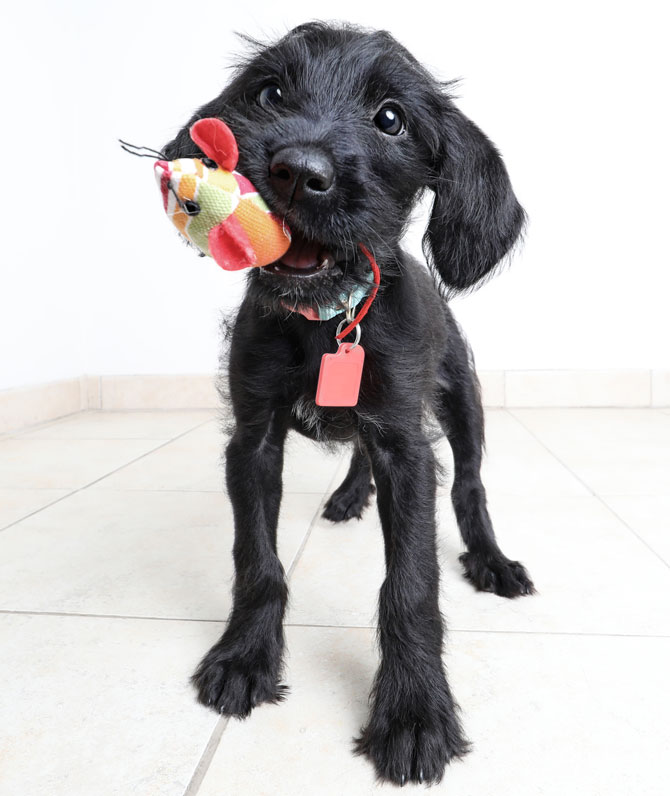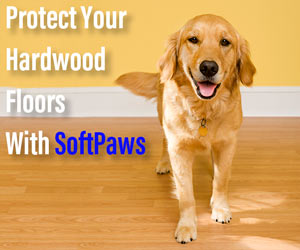Avoid These Choking Hazards for Dogs

It's an often-overlooked danger for dogs—choking. But dogs do choke on ordinary, everyday items that owners allow them to play with or even routinely give them.
Be aware of these everyday items that are choking hazards for dogs.
Sticks
Sticks are a common choking hazard for dogs. That's because dogs love to grab them, chew pieces off them, and run with them.
In addition to choking, sticks can be dangerous to dogs in other ways, including:
- Impaling the dog through the roof of the mouth, in the esophagus, or through the neck or chest.
- Getting stuck between the rear molars in the lower jaw.
- Stabbing and injuring soft mouth tissues.
Make sticks off-limits for your dog by providing other, more appropriate toys for fetching, chewing, and carrying around.
Tennis Balls
Many dogs absolutely love to fetch balls, and tennis balls are often chosen because they're small enough for the dog to handle easily, can be thrown easily, and travel far when tossed. However, tennis balls can be a choking hazard.
A tennis ball can collapse when a dog grabs it with his teeth, and then it's small enough to cause choking. Also, dogs tend to chew on tennis balls, which are almost effortlessly torn apart, and those little pieces can cause choking or intestinal obstructions.
Don't allow your dog to use tennis balls as chew toys and take them away if they become compressed during a game of fetch.
Bones
Bones are an extreme choking hazard for dogs because they often try to swallow bigger pieces than will fit. They are also dangerous because they can get lodged between the teeth of the lower jaw, cause punctures in the mouth, stomach, and intestine, and result in gastrointestinal obstructions.
Small Dog Toys or Those with Squeakers
Toys that are small enough to get caught in your dog's throat on their own or that can be easily compressed or chewed apart into smaller pieces are choking hazards. Always be sure to choose the right size toy for your dog and take a toy away if it gets compressed or torn apart.
If your dog tends to tear up toys, avoid those with squeakers because that part, once freed from the toy, is a choking hazard.
Rawhides
Rawhide bones are well-known choking hazards for dogs. What happens is your dog works at a spot on the bone, softening it until it comes loose. Often, that piece of rawhide then gets swallowed whole, and it may be just the right size for choking on. Rawhide pieces can also result in GI obstruction requiring surgical intervention.
Rawhides (plain) should only be given when you're there to supervise your dog and take away any pieces he gets off that aren't small enough.
Kids' Toys
Many children's toys are small enough for a dog to choke on or have pieces that easily come off when chewed on, and those can result in choking.
Kids' socks and underwear are a common dog-choking hazard as well.
General Dog Choking Safety
In addition to being diligent about not letting your dog have things that are choking hazards and providing proper supervision when he has something that may be small enough to choke on, you should also teach him the drop command. Once he knows and follows that command, it will be easier for you to protect him, if you're there, because if you see him grab something too small, you can get him to release it immediately so you can pick it up.
If your dog doesn't know the drop command, you may have to try and wrench his jaw open to retrieve the choking hazard, which can cause him to swallow or attempt to swallow it.
Visit this article: "How to Teach Your Dog the Drop Command."
If your dog is choking, try to stay calm. Be careful because a panicked dog may bite. If possible, open your dog's mouth and grab the foreign object with tweezers. If you can't and the dog is small, hold him upside down, supporting his chest and not shaking.
If he's large, lift his back feet like a wheelbarrow.
If that doesn't work, perform the Heimlich by kneeling behind your dog, wrapping your arms around his waist, intertwining your hands into a fist, and thrusting upward and forward about an inch behind the sternum.
Learn more here: "First Aid for Coughing and Choking in Dogs."
You May Also Like These Articles:
First Aid for Dogs: An Overview
First Aid for Coughing and Choking in Dogs
First Aid for a Dog That Isn't Breathing
First Aid Kit Essentials for Dogs
How to Teach Your Dog the Drop Command
Disclaimer: This website is not intended to replace professional consultation, diagnosis, or treatment by a licensed veterinarian. If you require any veterinary related advice, contact your veterinarian promptly. Information at DogHealth.com is exclusively of a general reference nature. Do not disregard veterinary advice or delay treatment as a result of accessing information at this site. Just Answer is an external service not affiliated with DogHealth.com.
Notice: Ask-a-Vet is an affiliated service for those who wish to speak with a veterinary professional about their pet's specific condition. Initially, a bot will ask questions to determine the general nature of your concern. Then, you will be transferred to a human. There is a charge for the service if you choose to connect to a veterinarian. Ask-a-Vet is not manned by the staff or owners of DogHealth.com, and the advice given should not delay or replace a visit to your veterinarian.



